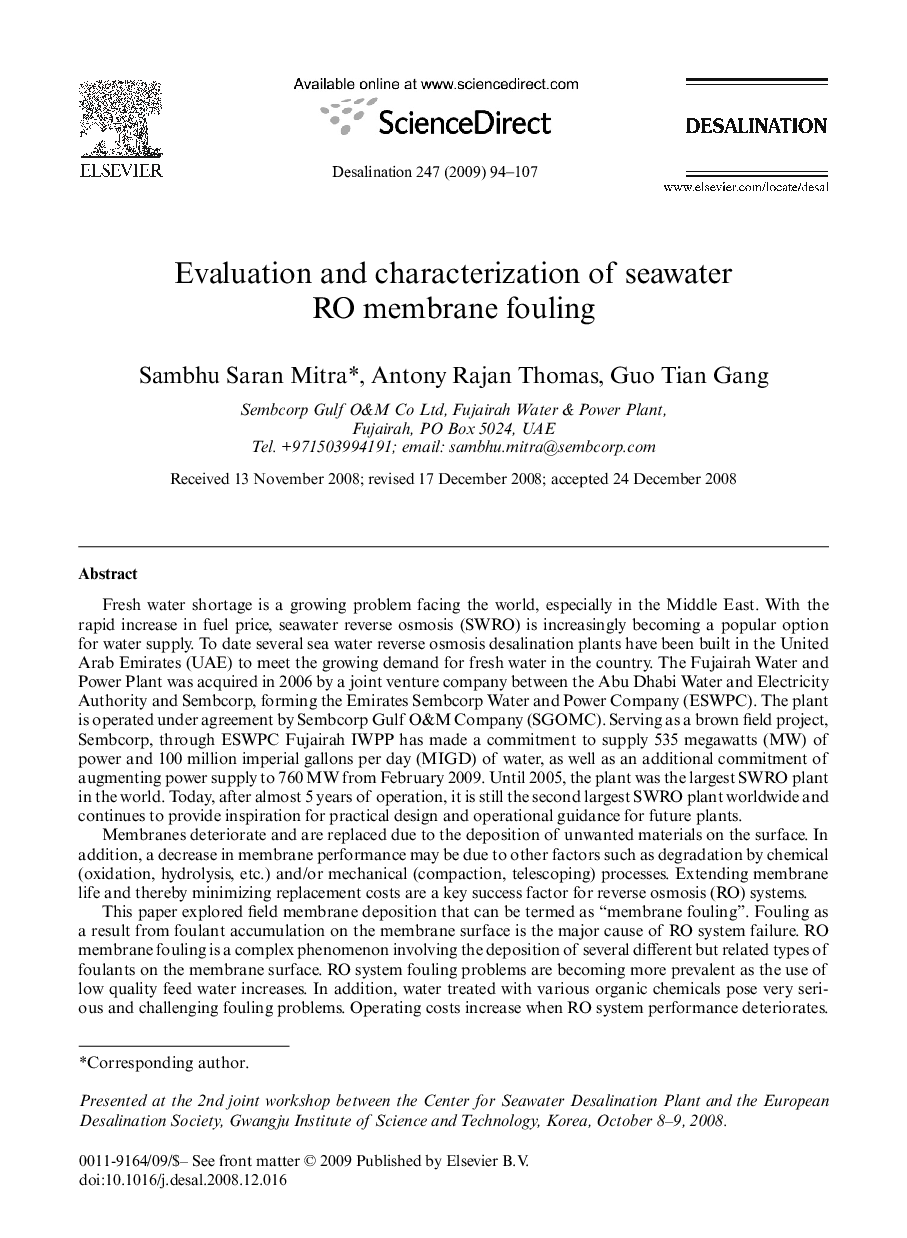| کد مقاله | کد نشریه | سال انتشار | مقاله انگلیسی | نسخه تمام متن |
|---|---|---|---|---|
| 626523 | 1455443 | 2009 | 14 صفحه PDF | دانلود رایگان |

Fresh water shortage is a growing problem facing the world, especially in the Middle East. With the rapid increase in fuel price, seawater reverse osmosis (SWRO) is increasingly becoming a popular option for water supply. To date several sea water reverse osmosis desalination plants have been built in the United Arab Emirates (UAE) to meet the growing demand for fresh water in the country. The Fujairah Water and Power Plant was acquired in 2006 by a joint venture company between the Abu Dhabi Water and Electricity Authority and Sembcorp, forming the Emirates Sembcorp Water and Power Company (ESWPC). The plant is operated under agreement by Sembcorp Gulf O&M Company (SGOMC). Serving as a brown field project, Sembcorp, through ESWPC Fujairah IWPP has made a commitment to supply 535 megawatts (MW) of power and 100 million imperial gallons per day (MIGD) of water, as well as an additional commitment of augmenting power supply to 760 MW from February 2009. Until 2005, the plant was the largest SWRO plant in the world. Today, after almost 5 years of operation, it is still the second largest SWRO plant worldwide and continues to provide inspiration for practical design and operational guidance for future plants.Membranes deteriorate and are replaced due to the deposition of unwanted materials on the surface. In addition, a decrease in membrane performance may be due to other factors such as degradation by chemical (oxidation, hydrolysis, etc.) and/or mechanical (compaction, telescoping) processes. Extending membrane life and thereby minimizing replacement costs are a key success factor for reverse osmosis (RO) systems.This paper explored field membrane deposition that can be termed as “membrane fouling”. Fouling as a result from foulant accumulation on the membrane surface is the major cause of RO system failure. RO membrane fouling is a complex phenomenon involving the deposition of several different but related types of foulants on the membrane surface. RO system fouling problems are becoming more prevalent as the use of low quality feed water increases. In addition, water treated with various organic chemicals pose very serious and challenging fouling problems. Operating costs increase when RO system performance deteriorates. These costs are associated with membrane cleanup, replacement, and system downtime. The success of an RO system depends largely on three factors: system design, pretreatment (e.g., chemical conditioning), and system maintenance.Therefore it is very important to evaluate the nature and extent of fouling and the characterize of the foulant. This is essential for the betterment of water treatment procedures, better selection of chemicals and modification in processes—whatever possible to extend the life of the membrane.
Journal: Desalination - Volume 247, Issues 1–3, October 2009, Pages 94-107